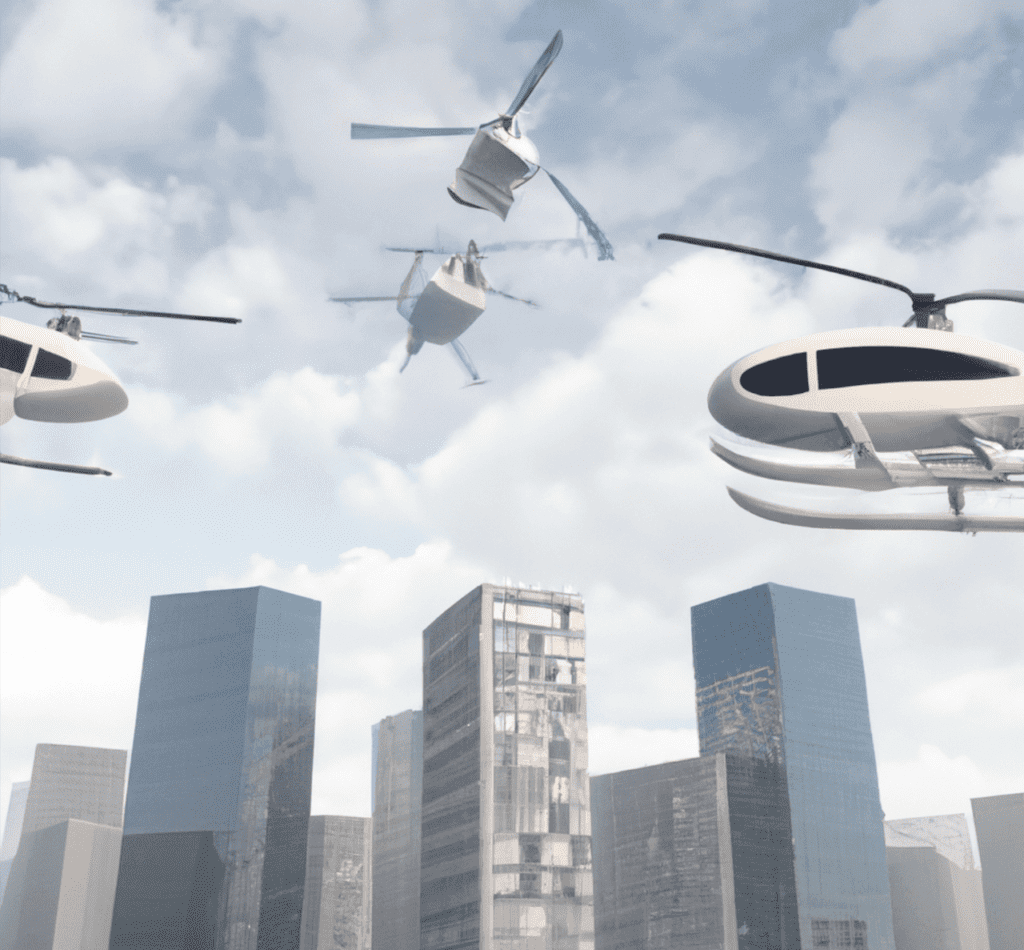
A hearing on aviation safety took place this week, during which concerns were raised about the certification processes developed by the FAA and their ability to enable imminent operations for innovative types of aircraft. (Photo created using DALL·E 2)
The certification processes created by the FAA may not be efficient and modern enough to enable the timely approval of a slew of new technologies under development, such as electric vertical take-off and landing (eVTOL) aircraft, Congress was warned during a hearing on aviation safety.
Testifying this week before the House of Representatives Transportation and Infrastructure Committee, General Aviation Manufacturers Association (GAMA) President and CEO Pete Bunce said, “The current certification process was developed in the 1960s and reflects an era when aircraft were simpler.”
He added that the FAA “takes a document-centric approach that is very transactional in nature … In the 1960s, the processes did not envision the extent of computer modeling and simulation that the industry is capable of today. Nor did it envision the highly integrated complex aircraft that achieve today’s safety standards.”
Bunce told lawmakers that the wave of new aviation technology on the horizon “has not been seen since the dawn of the jet age.”
During questioning from lawmakers, FAA Acting Associate Administrator for Aviation Safety, Dave Boulter, said the agency is aware of the need to speed up certification processes. “The pace of technology has increased, but the pace of our processes have not,” he conceded, adding that his “number one goal” is to make the certification process faster without compromising safety.
As Congress debates legislation to reauthorize the FAA before the agency’s current authorization expires on Sept. 30, 2023, Boulter said lawmakers should focus on changes that could make the FAA “more agile” and streamline “all the hoops we jump through.”
Advanced air mobility (AAM) companies such as Joby Aviation and Archer Aviation are seeking to have their passenger air taxi eVTOLs certified by the FAA by the end of 2024, allowing entry into service in 2025.
Bunce noted that the FAA has promised to promulgate its “powered-lift” special federal aviation regulation by December 2024 to establish operational and pilot requirements for commercial eVTOL operations—needed to allow the aircraft to operate even after gaining FAA type certification.
“This is the FAA’s announced completion date, which is necessary to enable the expected entry into service of initial AAM aircraft,” Bunce said. “[Congress] should hold the FAA to that commitment.”
He proposed that Congress put “in place an interim solution that would allow for this new category of ‘powered-lift’ aircraft … to operate commercially under specified existing regulations if the FAA fails to publish these rules by the deadline.”
US National Transportation Safety Board (NTSB) chair Jennifer Homendy, also speaking at the House hearing, said smooth airspace integration needs to be a high priority. “The integration of high-volume drone operations, advanced air mobility aircraft, commercial airliners, general aviation aircraft, and commercial space vehicles all together in the National Airspace System is increasing the complexity of airspace operations and management,” she explained. “This diverse platform of operations will also require enhanced—and in some cases, all new—skill sets and capabilities as the complexity and breadth of operations grows.”
House Aviation Subcommittee Chair Garret Graves (R-Louisiana) cautioned that the next decade will present a challenge to the FAA. “In the next 10 years, the aerospace industry will involve an ever-increasing number of drones, the introduction of [eVTOLs], the reintroduction of civil supersonic aircraft, and the expanded use of commercial space transportation vehicles,” he said, adding: “Our regulatory organizational structure must adapt if we’re going to safely integrate new entrants into the market.”